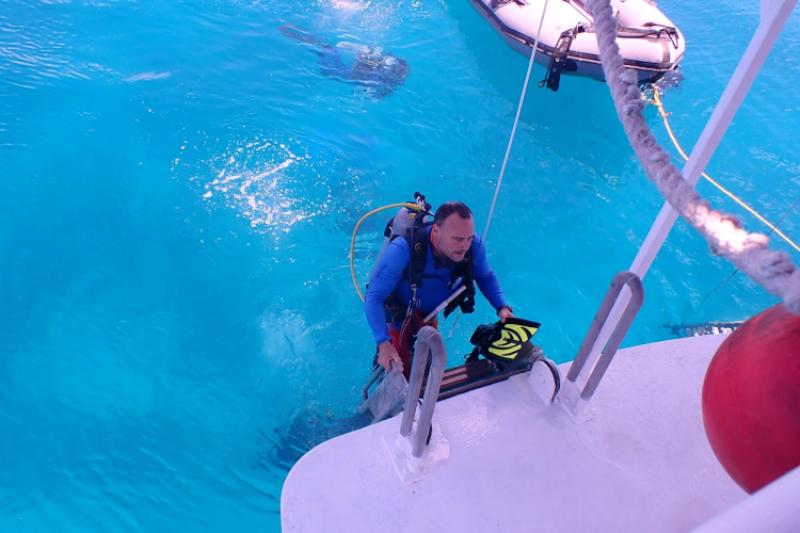Where did you grow up?
I spent half of my childhood in Orlando, Florida and the other half in Plano, Texas.
Where did you go to school and in what subject did you get your degree(s)?
I earned a Bachelor’s of Science in Marine Biology and a Master’s of Science in Wildlife and Fisheries Sciences from Texas A&M University. I followed that with a doctorate in Marine Science from University of South Alabama.
How did you come to work at the Southeast Fisheries Science Center?
Through my degree and several post-doctoral positions I did a lot of fish-y type science and habitat-based projects. After school, I got involved in several long-term monitoring programs, specifically with fish, seagrass, and corals, while I worked at the National Park Service and the Bureau of Ocean Energy Management. When I decided that I needed to escape the office environment, I took a position with NOAA’s National Coral Reef Monitoring Program which partners with the center. The job allowed me to dive for science while focusing on fish, corals, and long-term monitoring, something that my previous position did not facilitate.
What do you do at the science center?
I am the Habitat Ecology Branch Chief and I help advance habitat science and connect habitat ecology to fishery management. We study corals, essential fish habitats, how inshore and offshore habitats are connected, a handful of protected species, and mapping. I also lead several research projects. One project maps coral reefs along the Florida Reef Tract, and another examines the habitat related impacts of expanding mariculture farms in the Gulf of Mexico.
What do you like most about your position?
The variety of work and the challenges of facilitating so many excellent scientists in their work focused on identifying the linkages between habitat and fisheries in a manner that promotes use in management. Additionally, I like being able to be forward thinking in identifying issues that will need to be solved in the future. It is exciting to lay the scientific groundwork for answering questions before they become fishery management issues.
What advice would you have for someone interested in a career at NOAA Fisheries?
Don’t be scared to step forward and do something difficult. This includes taking charge of your future by changing your circumstances to get you where you want to go. Few people have ever gotten where they want to go while sitting on their hands.
Is there a book, quote, or person that influenced you to be the person that you are today?
This may sound silly, but when I was about 12 years old, I had to unload the dishwasher while helping my father clean the kitchen. Water had pooled on the bottom of the upside down glasses in the top rack. I was having a difficult time getting the glasses out of the machine without spilling the pooled water on the dishes in the bottom rack. I knew I was going to have to reclean the bottom dishes because often little bits of food remained in the pooled up water. I complained about this to my father and he said “Well, son, why don’t you just empty the bottom rack first.” After he said that I thought to myself, “Dang, that was a simple solution, boy do I feel stupid now. I should have thought about that before complaining.” Unbeknownst to me at the time, that was a pivotal event in my life. It taught me that when confronted with a difficult situation I should stop and look at the problem from another perspective, because another (and often simpler) solution probably exists. To this day, I still think about that interaction almost every time I empty the dishwasher and when I get stumped or frustrated by a situation. Years later, I asked my dad about if he happened to remember ever saying that to me and of course he did not. It was just a run of the mill conversation with a 12 year old.
What do you like to do outside of work?
I like doing things with and for my family. My sons (14 and 16 years old) are into fishing, hunting, soccer, and making videos. My daughters (10 and 12 years old) are into dancing, band, sports, and not being outdone by their older brothers. My wife is amazing for being the hub that manages to make careers, school, hobbies, and home life all work together for the six of us.






